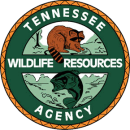States
TennesseeThe Harm’s Mill Dam is an obsolete barrier on the Elk River. It is the only major barrier on the mainstem of the river and separates 804 linear miles of streams below the dam from 780 miles upstream. Removing the dam would result in 1,114 free flowing miles that are open to fish and aquatic wildlife migration. There are 46 species of greatest conservation need that would benefit from this removal, including 19 that are federally listed. That is in addition to 139 other fish species that occur in the Elk River. There is also a greater public safety benefit to the project. The Elk is a major destination for paddlers and the obsolete dam represents a hazard to recreational paddler and anglers.
Quick Facts:
Project Status | In Development |
Location | TN, Lincoln |
NFPP Project Funding | $500,000 |
Restoration Techniques | Dam Removal |
Accomplishments | 1114 Stream Miles Reopened |
Project Partner Lead | Tennessee Wildlife Resource Agency |
Primary Species Benefited | Round Hickorynut |
The National Fish Passage Program combines technical expertise with a track record of success.
Implemented primarily through the Service's Fish and Wildlife Conservation Offices, the National Fish Passage Program provides financial and technical assistance to partners across the country. Since 1999, the program has worked with over 2,000 local communities, Tribes, and private landowners to remove or bypass over 3,400 barriers to fish passage fish passage
Fish passage is the ability of fish or other aquatic species to move freely throughout their life to find food, reproduce, and complete their natural migration cycles. Millions of barriers to fish passage across the country are fragmenting habitat and leading to species declines. The U.S. Fish and Wildlife Service's National Fish Passage Program is working to reconnect watersheds to benefit both wildlife and people.
Learn more about fish passage and reopen access to over 61,000 miles of upstream habitat for fish and other animals. Staff have expertise in fish migration and biology as well as financial, engineering, and planning assistance to communities, Tribes, and landowners to help them remove barriers and restore rivers for the benefit both fish and people.
Fish passage project proposals can be initiated by any individual, organization, government, or agency. However, proposals must be submitted and completed in cooperation with a Fish and Wildlife Conservation Office. (Please note that fish passage projects being used for federal or state compensatory mitigation or required by existing federal or state regulatory programs are not eligible for funding through the National Fish Passage Program.)
CONTACT A FISH PASSAGE COORDINATOR IN YOUR AREA TO GET STARTED.



